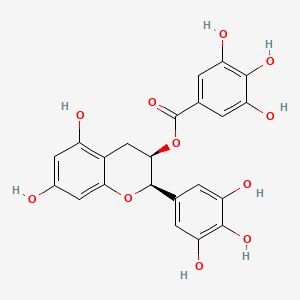| ImmunCR Id : | ICR126 |
| Chemical Name : | Epigallocatechin gallate |
| Plant Source : | Camellia sinensis |
| Nutraceutical information : | Edible, major content found in tea |
| Mode of administration : | Oral, Liquid |

| Immunomodulatory mechanism : | Studies showing that EGCG is anti-infammatory and T cell-suppressive, particularly with CD4+ T cells, are for the most part reproducible. Along this line, recent studies have further revealed that EGCG differentially modulates the development of effector CD4+ T cell sublineages. Collectively, these immunomodulatory effects of EGCG seem to support the purported benefit of consuming green tea/EGCG as an alternative and complimentary strategy in preventing and mitigating autoimmune infammatory diseases, especially those that are T cell-mediated. |
| Description : | Epigallocatechin Gallate is a phenolic antioxidant found in a number of plants such as green and black tea. It inhibits cellular oxidation and prevents free radical damage to cells. It is under study as a potential cancer chemopreventive agent. (NCI) |
| IUPAC Name | [(2R,3R)-5,7-dihydroxy-2-(3,4,5-trihydroxyphenyl)-3,4-dihydro-2H-chromen-3-yl] 3,4,5-trihydroxybenzoate |
| SMILES | C1[C@H]([C@H](OC2=CC(=CC(=C21)O)O)C3=CC(=C(C(=C3)O)O)O)OC(=O)C4=CC(=C(C(=C4)O)O)O |
| Formula | C22H18O11 |
| InchiKey | WMBWREPUVVBILR-WIYYLYMNSA-N |
| Kingdom | Organic compounds |
| Superclass | Phenylpropanoids and polyketides |
| Class | Flavonoids |
| Subclass | Flavans |
| LogP | 3.097 |
| Molecular weight | 458.372 |
| Hydrogen Bond Acceptor | 11 |
| Hydrogen Bond Donor | 8 |
| Polar surface area | 201.684 |
| No. of rotatable bonds | 4 |
| Number of Aromatic Rings | 3 |
| Number of rings | 4 |
| Absorption level | Very low |
| Solubility level | Very Soluble |
| Blood Brain Barrier | Undefined |
| Plasma protein binding | Non-Binder |
| CYP2D6 inhibition | Non-Inhibitor |